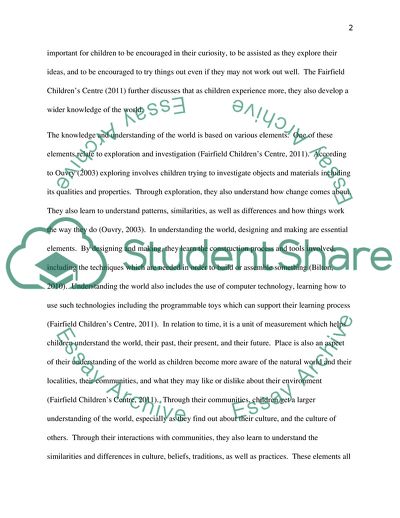Cite this document
(The Effect the Outdoor Environment Has on Childrens Knowledge and Literature review Example | Topics and Well Written Essays - 1750 words, n.d.)
The Effect the Outdoor Environment Has on Childrens Knowledge and Literature review Example | Topics and Well Written Essays - 1750 words. https://studentshare.org/education/1793454-the-effect-the-outdoor-enviroment-has-on-childrens-knowledge-and-understanding-of-the-world
The Effect the Outdoor Environment Has on Childrens Knowledge and Literature review Example | Topics and Well Written Essays - 1750 words. https://studentshare.org/education/1793454-the-effect-the-outdoor-enviroment-has-on-childrens-knowledge-and-understanding-of-the-world
(The Effect the Outdoor Environment Has on Childrens Knowledge and Literature Review Example | Topics and Well Written Essays - 1750 Words)
The Effect the Outdoor Environment Has on Childrens Knowledge and Literature Review Example | Topics and Well Written Essays - 1750 Words. https://studentshare.org/education/1793454-the-effect-the-outdoor-enviroment-has-on-childrens-knowledge-and-understanding-of-the-world.
The Effect the Outdoor Environment Has on Childrens Knowledge and Literature Review Example | Topics and Well Written Essays - 1750 Words. https://studentshare.org/education/1793454-the-effect-the-outdoor-enviroment-has-on-childrens-knowledge-and-understanding-of-the-world.
“The Effect the Outdoor Environment Has on Childrens Knowledge and Literature Review Example | Topics and Well Written Essays - 1750 Words”. https://studentshare.org/education/1793454-the-effect-the-outdoor-enviroment-has-on-childrens-knowledge-and-understanding-of-the-world.


